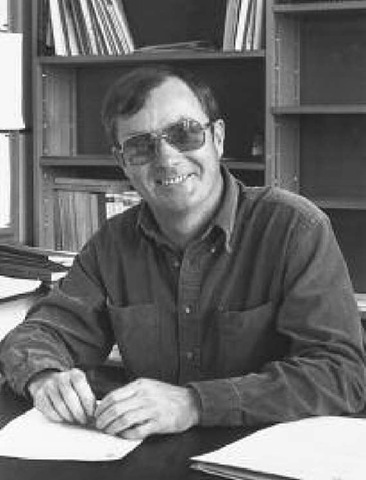(1945- ) New Zealander Structural Geologist
Richard Sibson has looked at faults and earthquake generation in a way that is a bit different from the standard approach. Normally, scientists study the earthquake waves, surface features caused by faults or ancient inactive faults. Sibson considers the actual processes of faulting at the point where the earthquake is generated. This involves a more holistic approach that requires an integration of all of the standard studies to consider the single moment that the earthquake occurs as well as speculation of all of the components that are no longer observable. This work bridges the gap between structural geology and seismology.
Sibson looked at the interaction between irregularities on fault surfaces during earthquakes. If they create gaps, he termed them dilational and if they pressed together, he called them antidila-tional. Next, he considered how the fluid would behave in the system. He found that in dilational areas, the fault wall rock would implode into an open gap forming a fragmental rock called breccia. The dilation areas would also draw all fluids into them at once, driving the brecciation processes, while the antidilational areas would drive out the fluids under pressure. These mineral-rich fluids, upon filling an area of relatively very low pressure, would precipitate out their contained minerals due to the drop in solubility. Therefore, this process also explains the genesis of ores within fault zones. Fluids will be drawn and forced from one spot to another through a process called seismic pumping as the fault evolves. In this model, mineralization is induced by pressure gradients as easily as chemical buffering. Sibson is especially interested in gold deposits. The system works like any hydraulic system with certain rock fractures acting like valves. Examples of his papers on this topic are “Crustal Stress, Faulting and Fluid Flow” and “Stopping of Earthquake Ruptures at Dila-tional Jogs.”
Richard Sibson in his office in New Zealand
Another interest that Sibson pursues is the frictional aspects of faulting. Friction can generate significant heat along fault planes during earthquakes at relatively shallow levels in the crust. The heat can be so intense that it actually melts the rock along the fault walls. The resulting liquid (magma) moves along the fault and freezes into a glass called “pseudotachylite” which looks as if it could be magmatic. Fluids play a role in this melting process. The stresses build up, and releases in faults are directly related to the amount of friction in a system, thus explaining the regularity and severity of earthquakes. Again, higher fluid pressures release the built-up stress at lower levels causing less severe earthquakes. His paper, “Generation of Pseudotachylite by Ancient Seismic Faulting,” is an example of this work.
Richard Sibson was born on November 28, 1945, in New Zealand. He attended the University of Auckland, New Zealand, where he earned a bachelor of science degree (first class) in geology with honors in 1968. He completed his graduate studies at the Imperial College of the University of London, England, where he earned a master of science degree and a Ph.D. in 1970 and 1977, respectively. He was a lecturer in structural geology at Imperial College from 1973 to 1981 before accepting a position as a visiting scientist at the U.S. Geological Survey Office of Earthquake Studies in Menlo Park, California, in 1981. He joined the faculty at the University of California at Santa Barbara in 1982. In 1990, he moved to New Zealand to the University of Otago, where he remains today. He served as department head from 1990 to 1996. Richard Sibson married Francesca Ghisetti in 1999. She is a professor of structural geology at the University of Catania in Italy.
Richard Sibson is leading a very productive career. He is the author of some 74 articles in international journals, professional volumes, and governmental reports. He has also written one book on structural geology. Many of his papers are often-cited seminal studies on active fault processes. He has received several awards in recognition of his work, including the Bertram Memorial Prize at the University of Aukland, the Royal Commission for the Exhibition of 1851 Overseas Scholarship, and the Wollaston Fund from the University of London. He has performed service to the profession including convening several conferences and hosting numerous short courses. He has also served editorial positions including associate editor of the Geological Society of America Bulletin, and editorial advisory board for Journal of Structural Geology and Geofluids.

